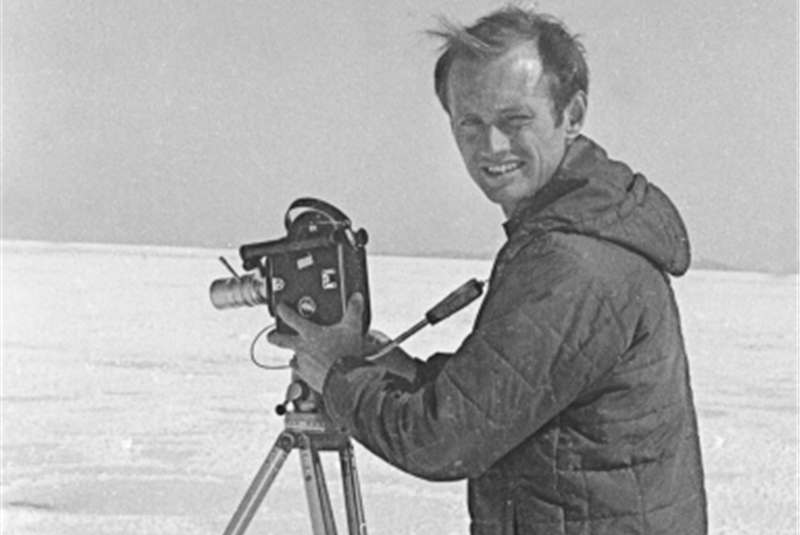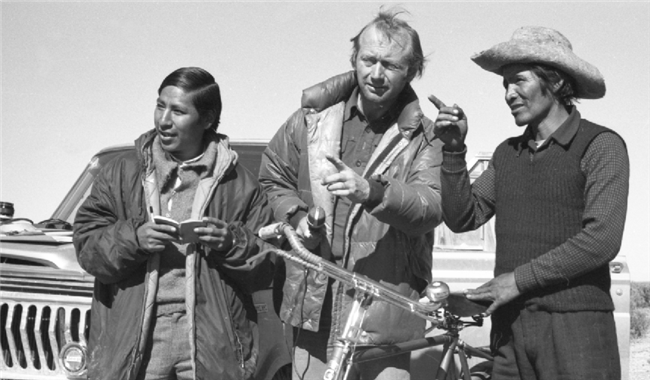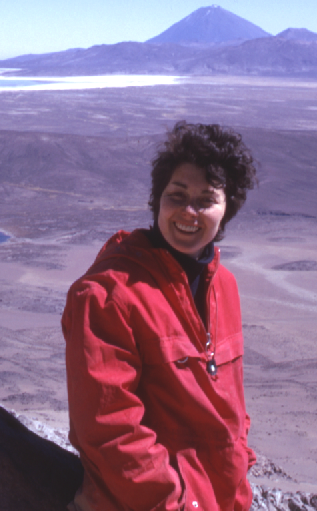
By Nicholas Asheshov —
Tony Morrison, the naturalist, filmmaker and writer whose enthusiasm and talents over half a century were focused on Peru and the Amazon, has died at his home in Woodbridge, Suffolk after a short illness. He was 83.
Tony, one of the pioneers, with David Attenborough of the BBC’s world-leading wildlife film tradition, was lucky to get to 2020 and he always blessed his good fortune during an enormously productive career and a happy home life with his wife Marion, who he met on the shores of Lake Titicaca in 1963. Marion was, and indeed still very much is, a Welsh girl, social investigator and writer. Much of Tony’s film and writing trips to the Andes and the jungle were made together. At an early stage, in the early 1960s, they became friends of C N (Griff) Griffis, editor and publisher of the Andean Air Mail & Peruvian Times. Dozens of Tony’s photos and stories on the coast, the highlands and jungle appeared first in the PT. In those days the Peruvian Times was famous for publishing every week firsthand accounts of travels in the often remote and little-travelled corners of the Andes and the Western Amazon.
Looking back just a few years ago on what turned out to be the last of a lifetime of visits to Cusco and Urubamba, which he knew from the days half a century earlier before tourists, Tony reflected that he and a few others of his generation were the last to travel through the Amazon and the Andes “when the going was still good.”
“When we started, they didn’t even give us plastic bags to keep our film or our matches dry. It was canoes, the back of a lorry, a clapped out World War II plane if you were lucky. The jungle really was awful, difficult, dangerous even. Keeping your notes and food from the ants and your precious film out of the river was a bugger.
“Thank goodness we don’t have to do it again but I’m glad we did when you still could . Today it’s just hotels, box lunches, airports.”
In 1970 Tony was lucky to survive a car smash in which two others died. A hundred yards behind his car, was one of Bolivia’s top surgeons. He saved Tony despite multiple injuries. I met him and Marion in Lima at the time and we have been firm friends since , as also with Ellie Griffis, publisher and today editor of the Peruvian Times.
Tony took his degree at Bristol University in Zoology, travelling and working in the Middle East and India. In Beirut he became friendly with Kim Philby, the spy, who was on his way, as it turned out, to end his days in Moscow. A first expedition included two- to three-month long projects in rural villages in India and Bolivia.
Then came nine months as a cameraman for Tom Stobart, who filmed the successful 1953 ascent of Everest, and Ralph Izzard, ace reporter of the Daily Mail. Another member of the team was Joe Brown, the UK’s leading rock climber, there to scale the walls of Petra, Jordan’s leading ancient ruin, and get into one of the caverns above the main portals. Probably the first human to do so in 2000 years. Joe loudly announced that ‘there was bugger all up there’ adding a bit of untraditional, for the BBC, spice to the film.
 Tony’s other adventures included a dinghy trip down the River Jordan, a close run-in with swirling dervishes in Baluchistan, discovering what was left of Lawrence’s Hejaz railway, and the purchase of a fox. This was the famous fox given to Philby, a friend of Ralph Izzard’s, who was reportedly very upset when he found it dead in the street, below the balcony of his Beirut apartment shortly before he defected to Russia —a similar ending to that of many Philby connections.
Tony’s other adventures included a dinghy trip down the River Jordan, a close run-in with swirling dervishes in Baluchistan, discovering what was left of Lawrence’s Hejaz railway, and the purchase of a fox. This was the famous fox given to Philby, a friend of Ralph Izzard’s, who was reportedly very upset when he found it dead in the street, below the balcony of his Beirut apartment shortly before he defected to Russia —a similar ending to that of many Philby connections.
In 1963 Tony formed Nonesuch Expeditions with Mark Howell, with a contract to make films in South America for David Attenborough’s BBC Adventure series. These were some of the first films to show people and places on the Andean side of the continent and included a first account of the Nazca lines with Dr Maria Reiche, the German mathematician trying to resolve the mystery. An attempt to raft through the fierce Pongo de Mainique, downstream of Machu Picchu, almost cost the lives of Mark, and Johannes Von Trapp as well as Tony himself.
It was on this expedition Tony met Marion, an unexpected bonus as it were, , working as a graduate volunteer among the Aymara on the shores of Lake Titicaca.
Together in the mid sixties they returned to South America filming for BBC World About Us and Anglia TV’s Survival series. They drove the length of the Andes many times in their Landrover and ventured into the Amazon to make the first film of the wildlife, rain and cloud forests of the newly designated Manu Park.
Tony and Marion later made a best selling film of the people and wildlife of the Falkland Islands, which led in turn to the filming for the BBC of the extraordinary salvage and tow home of the SS Great Britain, which had foundered nearly a century earlier in the Falklands. The Great Britain was then restored in Bristol docks.
In those days filming was a matter, with a 16mm Bolex, as like as not hand-held, clockwork-powered, using 200 or 400 foot reels of expensive black & white film. The heavy tripods of those days were part of the film-making baggage. On a trip through the Vilcabamba jungles below Machu Picchu in 1964, Tony left his tripod a mile away from camp in this apparently deserted corner of the western Amazon. Next morning he discovered a deep hole below the tripod. Some observant Machiguenga indians had supposed the tripod part of the equipment was for locating buried treasure. Tony, always observant, spotted a thick layer of burnt earth which he later reported to his friend John Hemming, the Inca historian. Hemming saw this as proof this Vilcabamba site was certainly the real ancient capital of the Incas fleeing the Spanish after the arrival of the Pizarros, who had burned the Inca refuge. In this roundabout way Tony proved conclusively that it was Vilcabamba, not Machu Picchu, which had been the last refuge of the Incas. The story appears towards the end of Hemming’s classic The Conquest of the Incas.
In 1971, he was on a Hovercraft expedition from Manaus in Brazil to Georgetown in Guyana for a BBC production. However, then came the car crash near La Paz. This did not deter Tony with Marion getting back into the field three years later, and film production, books and photography followed, always in South or Central America. Subjects were diverse, including The Andes for Time-Life World’s Wild Places, still one of the best books on the Andes; a search for Vilcabamba, the real lost city of the Incas; two books on the Nazca Lines; award-winning Great Railway Journeys Peru with Miles Kington; a BBC film Lizzie, a rubber boom classic Victorian lady’s Amazon adventure; and a collaboration with the group Incantation, taking them to South America, for a Channel 4 production Music of the Andes. Together he and Marion created the South American Pictures archive, and their children Kimball and Rebecca often travelled with them.

Bolivia had a special place in Tony’s affections, not only because he and Marion met there. But also for the amazing care he received after the car crash. He liked to recall how he had been in La Paz, on his way through as it were, for half a dozen revolutions and coups. But he was most in his element exploring remote areas like the department of Lipez, with its deserted Spanish mining villages and the great Salar of Uyuni which he first crossed by jeep with much trepidation in the early 1960s. Or researching a rubber story in the Amazon region with its great rivers, or following the trail of herbal witchdoctors in the Andes. (After which he and Mark were made Honorary Kallawaya witchdoctors). And so it was that he and Marion took the family to Bolivia for their twenty-fifth wedding anniversary, and again to celebrate fifty years since their first visit with friends in La Paz whom they had known since that time.
Tony edited and published the diaries of Margaret Mee, botanical artist extraordinaire. For the final chapter of her book, he took Margaret and her friend Sally, Duchess of Westminster, both in their 80s, into a remote part of the Rio Negro, an Amazon tributary, on a successful search for the night cactus Selenicereus wittii, also known as the ‘Amazon Moonflower’.
A big regret was almost but not quite getting the Royal Opera to perform in the wonderful Teatro Amazonas in Manaus — an idea pursued with the BBC over many years. In recent years, Tony with Marion travelled hundreds of miles by bus across Amazonia, to see the many changes since their first visits. At a talk in London in 2012, Tony described the impact of the Interoceanic Highway (see link).
Tony was a Fellow of the Royal Geographical Society for almost 60 years, one-time Chairman of the Anglo Peruvian Society in London, a Trustee of the Bolivian Wildlife Society and a Trustee of the Yavari, a project dedicated to restoring the oldest British-built steamship on Lake Titicaca.
Tony was born in Gosport 5th July 1936 and died on 8th May 2020 from a brain tumour. He was educated at Taunton School and Bristol University.
Tony Morrison’s Films
• 1960/1961 Two short films of University of Bristol expedition for Television Wales and West, one in India, one in Bolivia
• 1962 – 5 films in Jordan, Iran and Afghanistan for BBC Adventure (David Attenborough)
• 1963 – 7 films for Adventure, all 30 mins and b&w : Mystery on the Desert (Nasca); Descendants of the Incas; Children of the Lake; Treasures of Chuquisaca; A Forgotten Empire; Search for a Lost Language (Chipaya); After the Jesuits.
• 1964 – 2 films for Adventure, 1 for Anglia Survival (wildlife) ; Quest for Gold; Search for a Lost City (Vilcabamba) ; A Drop in the Ocean – Peru, Niño, fishing, birds






If knowledge is power…Tony Morrison certainly spread it generously while dedicated to Peru!
Sorry to hear this -loved his books. A memorable send-off by Nick, too.
Bon Voyage Tony Morrison.
I’ll carry your adventurous spirit along with me as I complete a promise to the Wise Ones to ‘record the Nasca Dream’
Even in 2022 his traveljourney-expedition on the Andes (Time-Life book 1975) is a well docomented and beautifully illustrated page turner, stille offering room for on imagination!
In the early 1960s I was a pupil at City of Bath Boys’ School. Tony spent a short spell on the staff. He left to embark on a trans-contentical expedition of South America and left me his card to keep in touch. I tried without success to contact him after completing my A-levels, and some years later applied, again unsuccessfully, to join an expeditionary team, even if only as humble admin support. He was inspirational, exciting and full of energy and dynamism. He certainly inspired me to travel and explore with several trips to Brazil and Asia. I remember him as tall, handsome in a slightly unkempt way, and energetic. He treated us boys as young adults and I believe earned the respect of all of us. I was sad to read today of his death, but was happy to see that he had had such a rich, fulfilling and significant life.